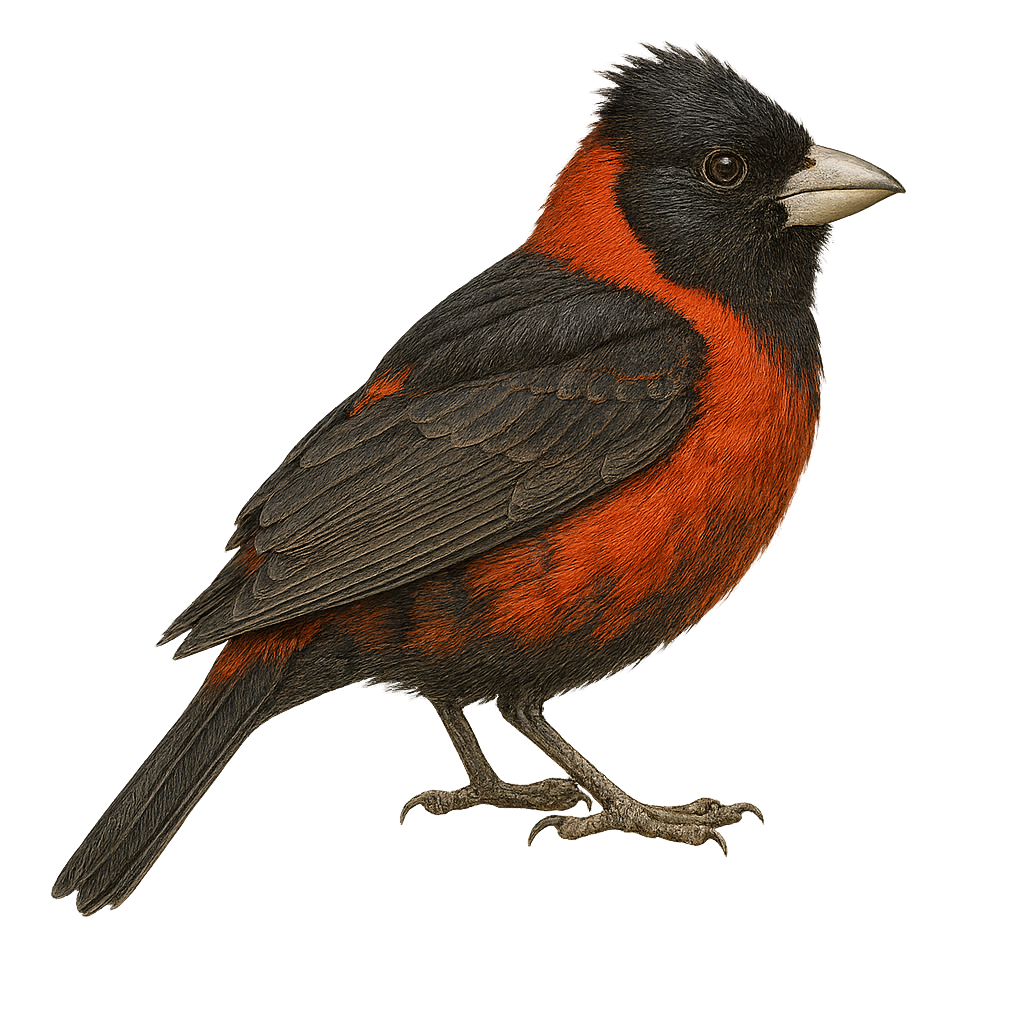Your wildlife photography guide.
Explore the crimson-collared grosbeak in detail, study its behavior, prepare your shots.
Where to observe and photograph the crimson-collared grosbeak in the wild
Learn where and when to spot the crimson-collared grosbeak in the wild, how to identify the species based on distinctive features, and what natural environments it inhabits. The WildlifePhotographer app offers tailored photography tips that reflect the crimson-collared grosbeak’s behavior, helping you capture better wildlife images. Explore the full species profile for key information including description, habitat, active periods, and approach techniques.
Crimson-collared Grosbeak
Scientific name: Periporphyrus celaeno

IUCN Status: Least Concern
Family: CARDINALIDAE
Group: Birds
Sensitivity to human approach: Suspicious
Minimum approach distance: 10 m
Courtship display: May to June
Incubation: 13-15 jours
Hatchings: May to July
Habitat:
Humid tropical forests, dense undergrowth, forest edges
Activity period :
Primarily active during the day, with peak activity in the morning and late afternoon.
Identification and description:
The Crimson-collared Grosbeak, Periporphyrus celaeno, is a striking bird with vivid red plumage, primarily red with black wings and tail, and a contrasting black head. It is endemic to the humid tropical forests of northeastern Mexico, where it inhabits dense undergrowth and forest edges. This bird is often seen alone or in small groups, feeding on fruits, seeds, and insects. The Crimson-collared Grosbeak is known for its melodious and varied song, which echoes through the canopy. Although it is relatively common within its restricted range, deforestation poses a potential threat to its natural habitats.
Recommended lens:
400 mm – adjust based on distance, desired framing (portrait or habitat), and approach conditions.
Photography tips:
To photograph the Crimson-collared Grosbeak, it is advisable to use a telephoto lens of at least 400mm to capture the details of its striking plumage without disturbing it. Look for areas where fruits are abundant, as this bird is often attracted to food sources. Be patient and discreet, as although this grosbeak is suspicious, it can become accustomed to your presence if you remain still. Take advantage of the natural morning light to achieve vibrant colors and good contrast.
The WildlifePhotographer App is coming soon!
Be the first to explore the best nature spots, track rutting seasons, log your observations, and observe more wildlife.
Already 1 430 wildlife lovers subscribed worldwide

